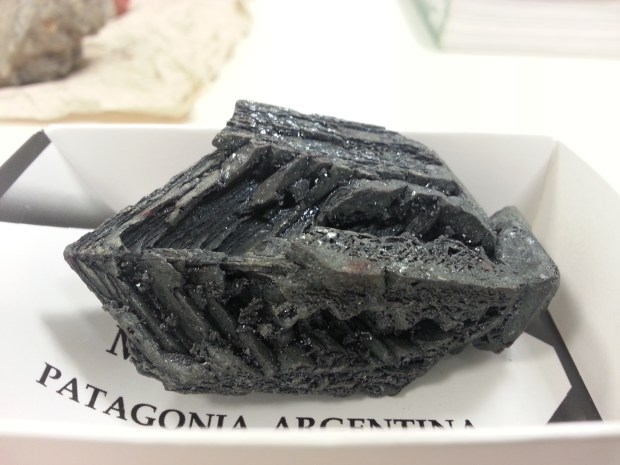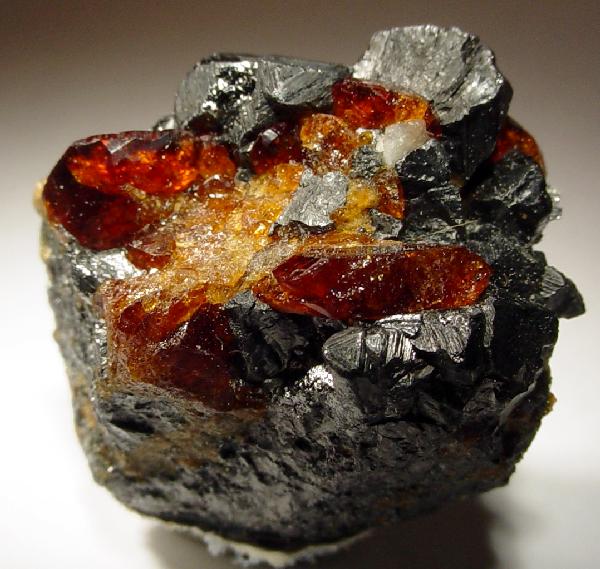
Photo by Stephanie Reed
This hematite and magnetite specimen is from Patagonia, Argentina. Bruce got it at the Denver show and gave it to Sharon Penner. It’s about 4 inches long and pretty shiny.

Photo by Stephanie Reed
This hematite and magnetite specimen is from Patagonia, Argentina. Bruce got it at the Denver show and gave it to Sharon Penner. It’s about 4 inches long and pretty shiny.

Credit: Aaron Palke/Gemological Institute of America
Since it’s January, it’s a good time to read about this garnet originally posted by Chemistry in Pictures.
“This gemstone isn’t pure andradite garnet [Ca₃Fe₂(SiO₄)₃], but its flaws produce its mesmerizing colors. Some gemologists think that this rainbow explosion arises because the garnet’s different elements aren’t regularly spaced from the core of the gemstone to the outside. For example, in some regions, aluminum atoms might have worked their way into the structure and replaced the iron atoms. These irregularities create mismatched sheets of atoms that then bend and stretch. This makes the stone birefringent, meaning that light travels through it at two different speeds. Under cross-polarized lighting conditions, rays of light that enter get misaligned by the time they exit, so they then interfere with each other and highlight some colors in certain spots, producing the spectrum seen here. The black flecks are tiny pieces of magnetite that were enveloped by the crystal as it grew.”

Photo by Rob Lavinsky, retrieved from Mindat at http://www.mindat.org/photo-37952.html
A shiny black chunk of pyramidal magnetite with glittering red crystals of chondrodite on top. It was found in the Tilly Foster Iron Mine in New York. Since it measures only 2.8 x 2.6 x 2.1 cm, if you’re on a desktop or tablet, you’re viewing it larger than actual size.

Photo by Archeodontosaurus (CC BY-SA 3.0), retrieved from https://commons.wikimedia.org/wiki/File:Magnetite.jpg
Some cool looking black rhombododecahedral crystals of magnetite amid dull golden octahedral crystals of pyrite.